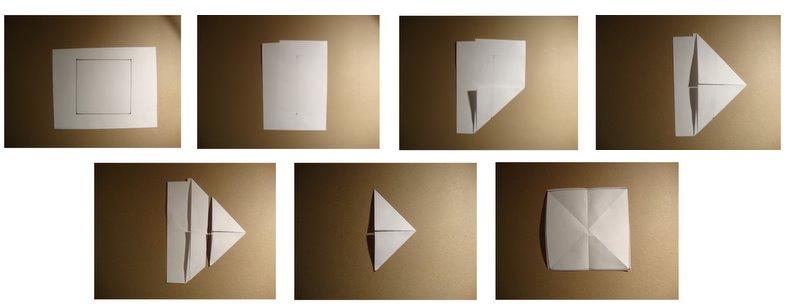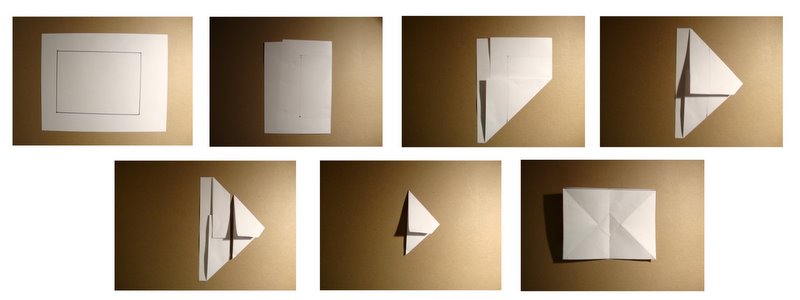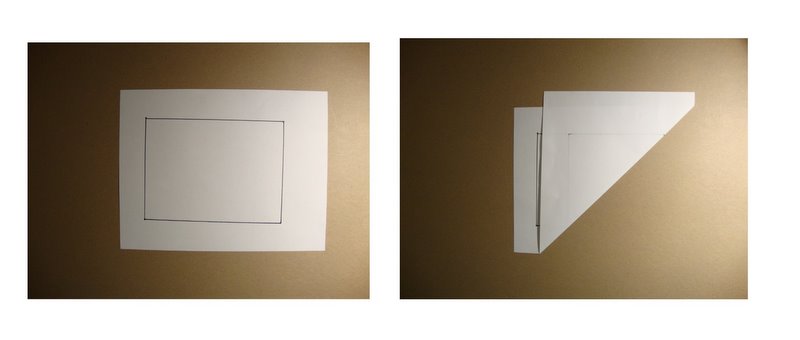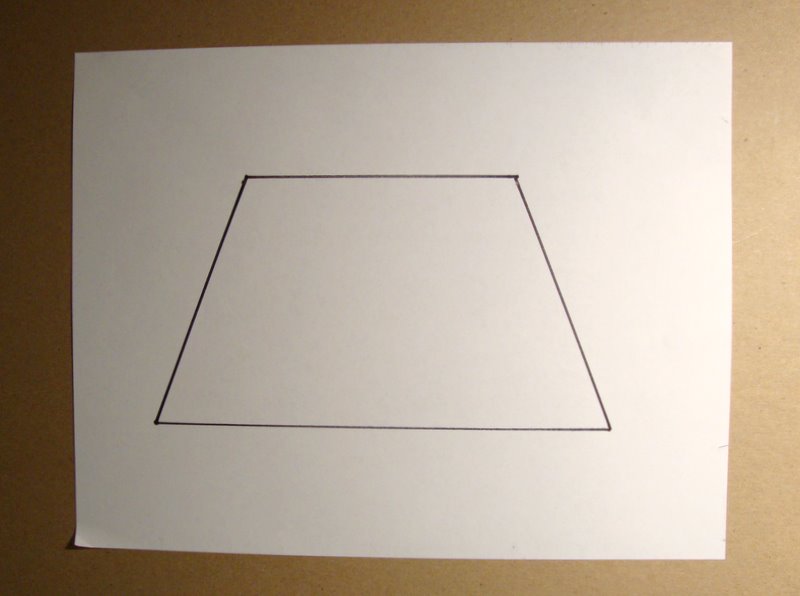One-Cut Challenge: Quadrilaterals
Here’s another introduction to the one-cut challenge, this time with quadrilaterals. This is another activity for students of all ages from my Fun with Folding series, and you can try this out even if you haven’t fully explored the one-cut challenge with triangles.
Recall that in the one-cut challenge, your task is to produce the given shape as a cut-out using only straight folds and asingle straight cut.
Let’s start with a square. One simple approach is to fold the square in half, then fold the top and bottom halves up along the vertical side.
This same approach also works with rectangles.
A second approach with the square involves fewer folds. First, fold along the main diagonal, then go from there.
In addition to being a more efficient solution, and raising the general question “What is the minimum number of folds needed to produce the shape?”, this approach produces some confusing results when applied to a rectangle!
Another easy quadrilateral to work with is the isosceles trapezoid.
But watch out: an arbitrary quadrilateral poses quite a challenge!
Happy folding!
Have more Fun With Folding!






11 Comments
Tao · May 10, 2011 at 10:44 am
Tried this with some students today. With regular polygons, seems like the minimum number of folds for an n-sided polygon is ceil(n/2). We’re still stuck on the scalene triangle.
MrHonner · May 10, 2011 at 12:22 pm
Your “number of folds” formula seems reasonable for regular polygons. It seems to get pretty complicated once you lose all the symmetry, though, as you are finding out with the scalene triangle.
Glad to hear you tried it with some students–how did it go?
Tao · May 12, 2011 at 9:50 am
My students enjoyed it and found the regular polygons pretty easy but were frustrated with the scalene triangle. They tried to Google an answer but were sad to see mrhonner.com as the top two results when I had showed them your site to introduce the problem in the first place.
MrHonner · May 12, 2011 at 9:53 am
I’m glad they enjoyed it!
It’s true that moving to the scalene figure involves a big jump in difficulty. Any ideas for an intermediate activity that bridges the gap?
Tao · May 12, 2011 at 1:58 pm
I think the intermediate activity is 1) identifying the folds for the equilateral/isosceles triangles as the angle bisectors and 2) exploring different ways to make the same folds for those triangles.
MrHonner · May 12, 2011 at 3:21 pm
Ideally, it would be another pure activity bridging the gap, one that didn’t require the [formal] identification of the folds with their associated geometric construction. That is, another “Try this!” folding challenge.
Scott Matthews · May 12, 2011 at 10:49 pm
I tried this with my freshman math team students, and they did surprisingly very well. After a few initial minutes of trying to figure things out, most of them quickly solved the equilateral and isosceles triangles. When I started handing out scalene triangles the pace definitely slowed down, but little by little I had students figuring it out. I’d say about 10-15 students got it on their own. When those students finished, most pretty easily got the isosceles trapezoid. After that, I even had 3-4 students get the random quadrilateral. Not bad for a 43 minute period.
MrHonner · May 13, 2011 at 10:16 am
I’m glad things went well! I’m impressed with your students–when I did this with a good sophomore class, only a few were able to figure the scalene triangle, and only one was able to figure out the arbitrary quadrilateral.
We did spend a lot of time drawing the figures out before folding (and arguing about what constituted ‘arbitrary’, as usual). Did you pass out prepared figures to the students? That would save a lot of time.
Tao · May 13, 2011 at 10:43 am
It took me personally a while to figure out the “pinch” folds that are required for the scalene triangle and quadrilateral. It did require a moment of asking myself, “am I allowed to do this?” Do you have any insight on how your students came to that realization?
MrHonner · May 13, 2011 at 12:41 pm
I personally didn’t use a “pinch” fold for the scalene triangle (as you might in finding a midpoint).
The student who figured out the quadrilateral is much stronger with intuition than explanation, so it was hard to figure out exactly how it happened.
Tao · May 13, 2011 at 1:33 pm
I guess “pinch” fold is the wrong term. A “tuck” fold, maybe? I’m referring to when you fold two angle bisectors at once.